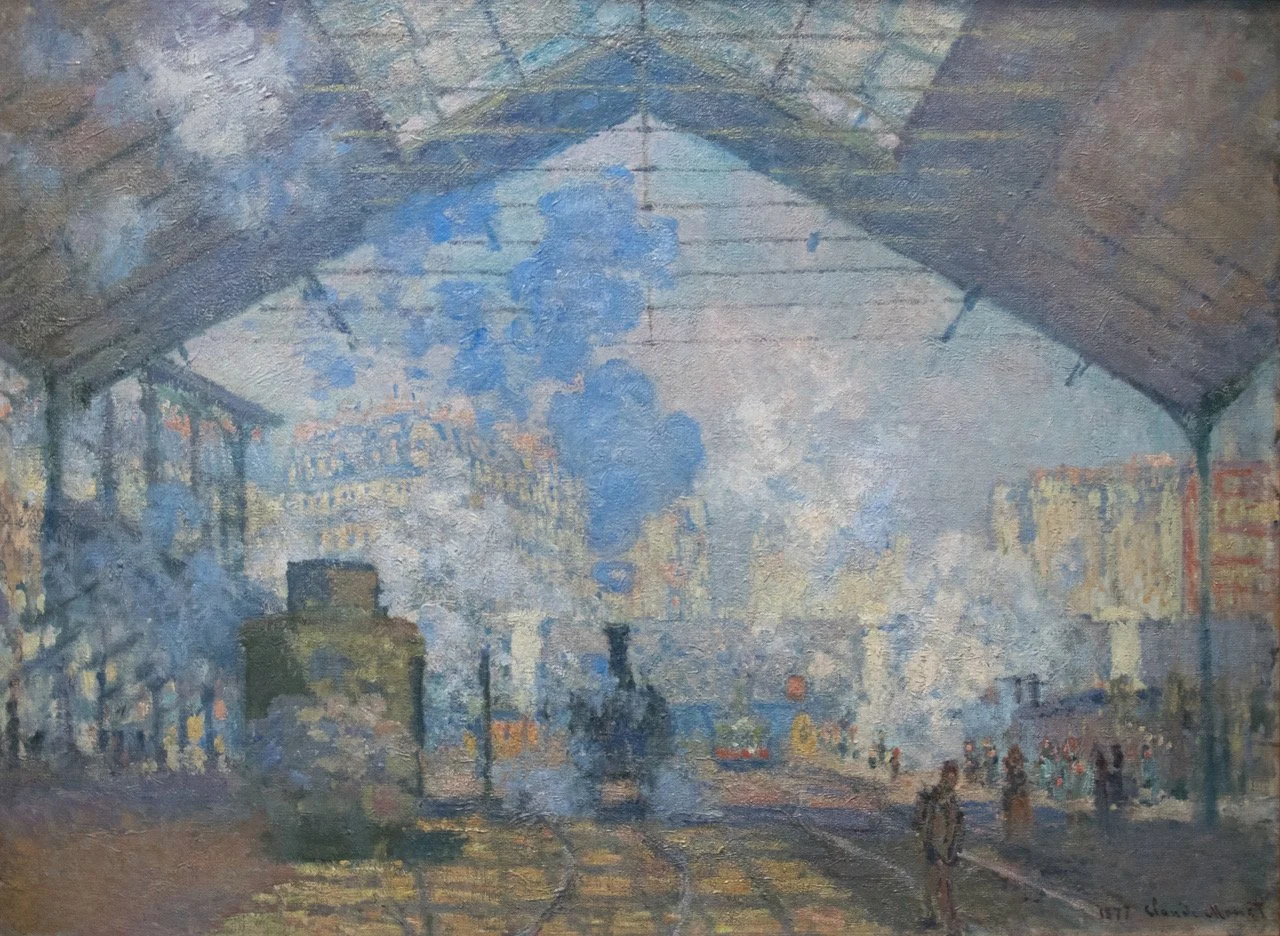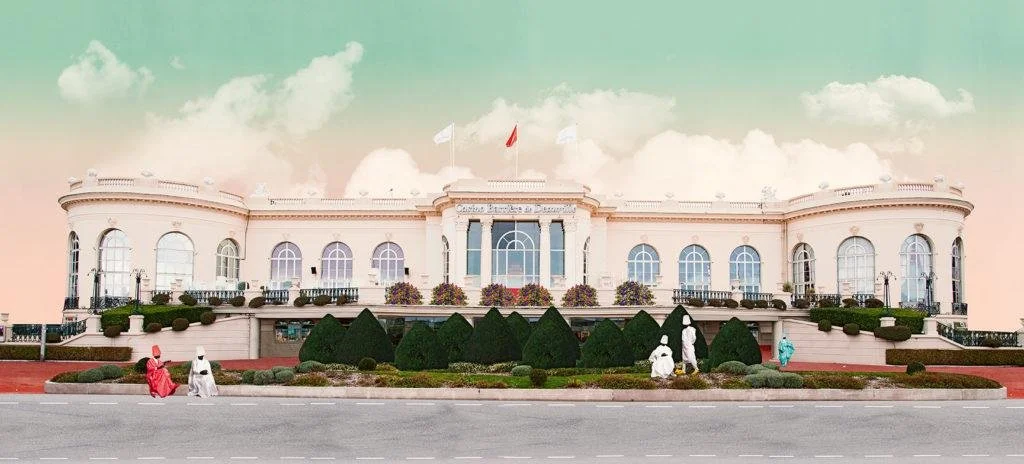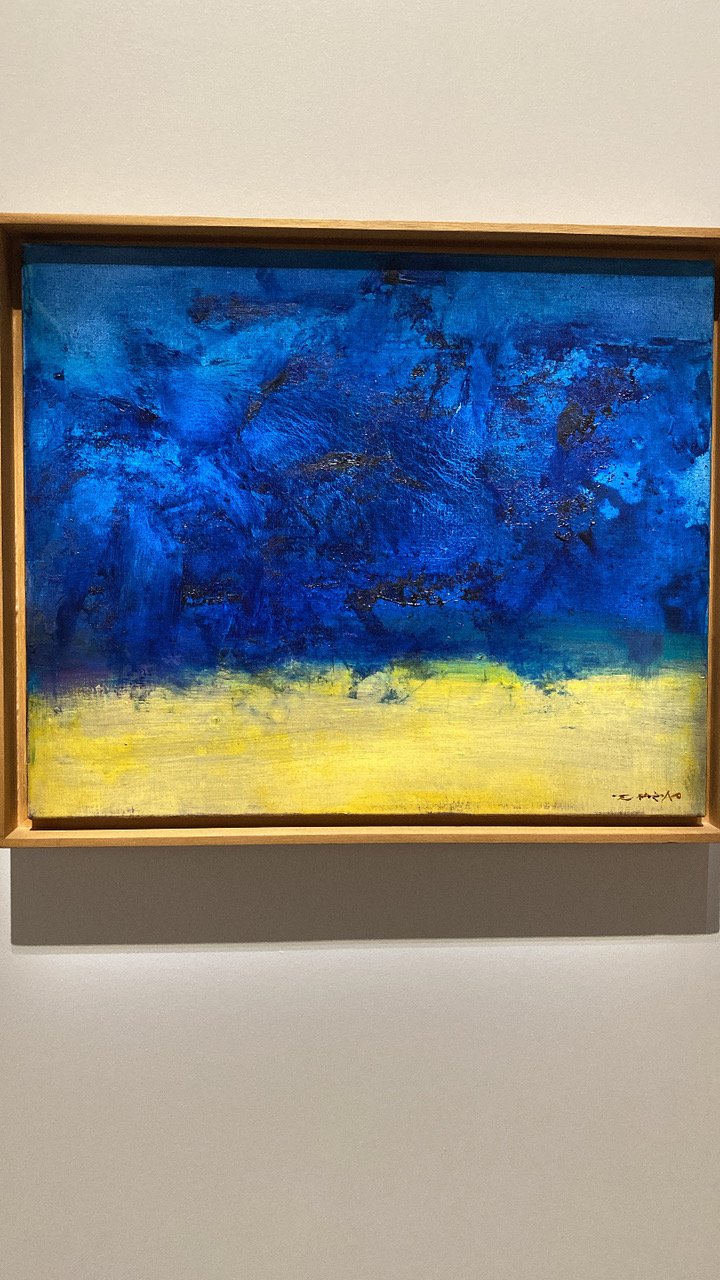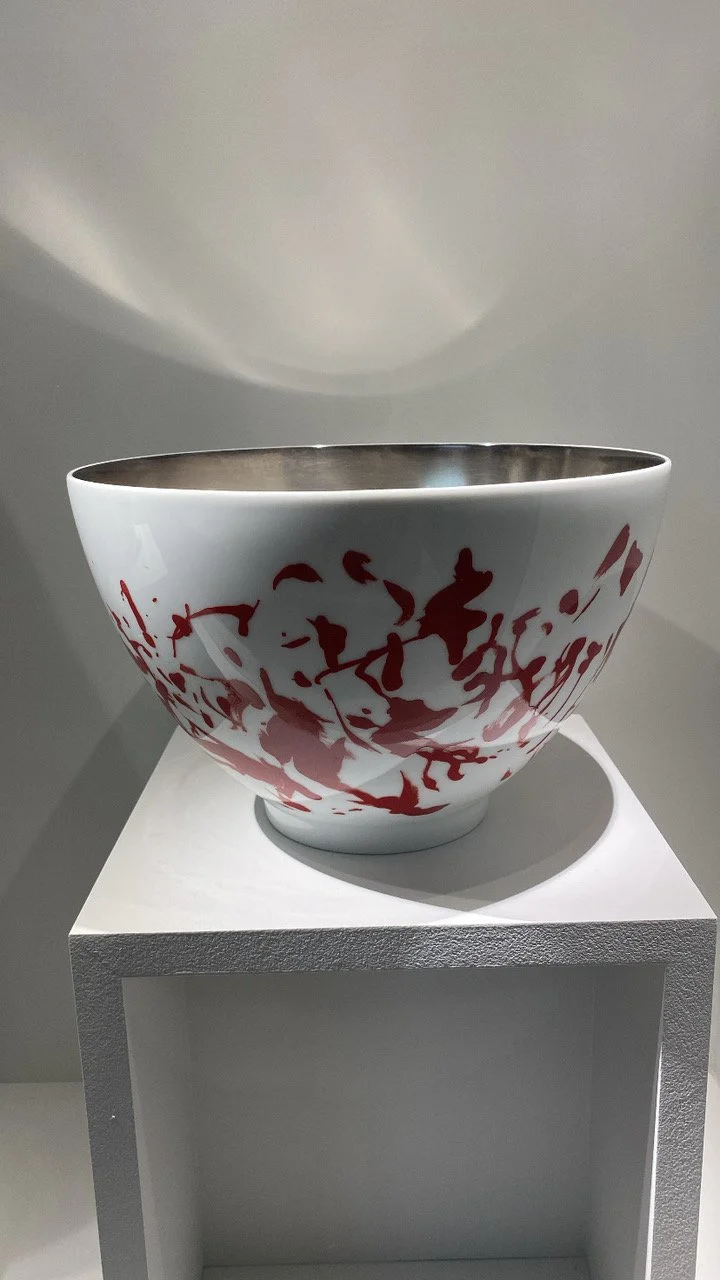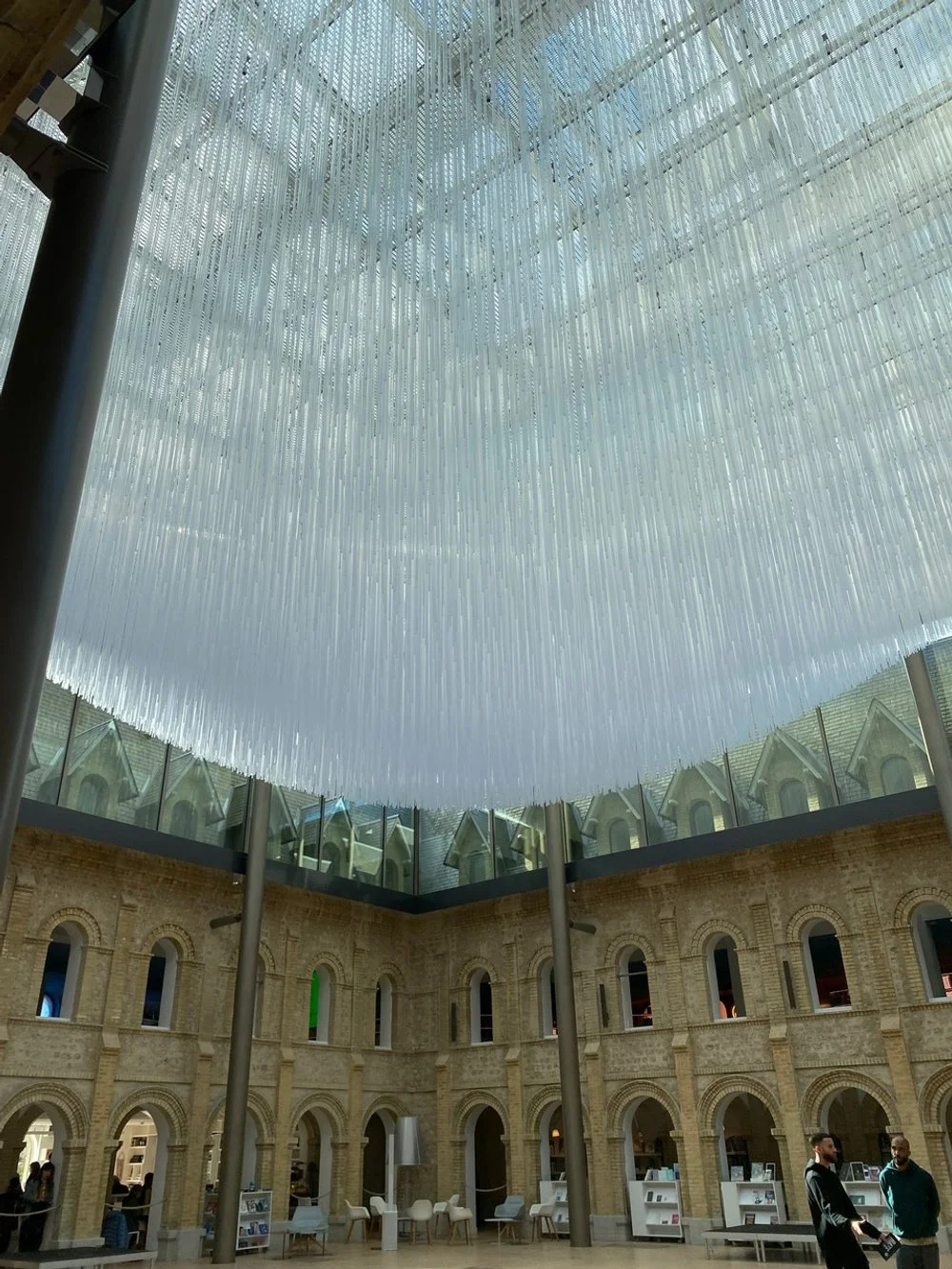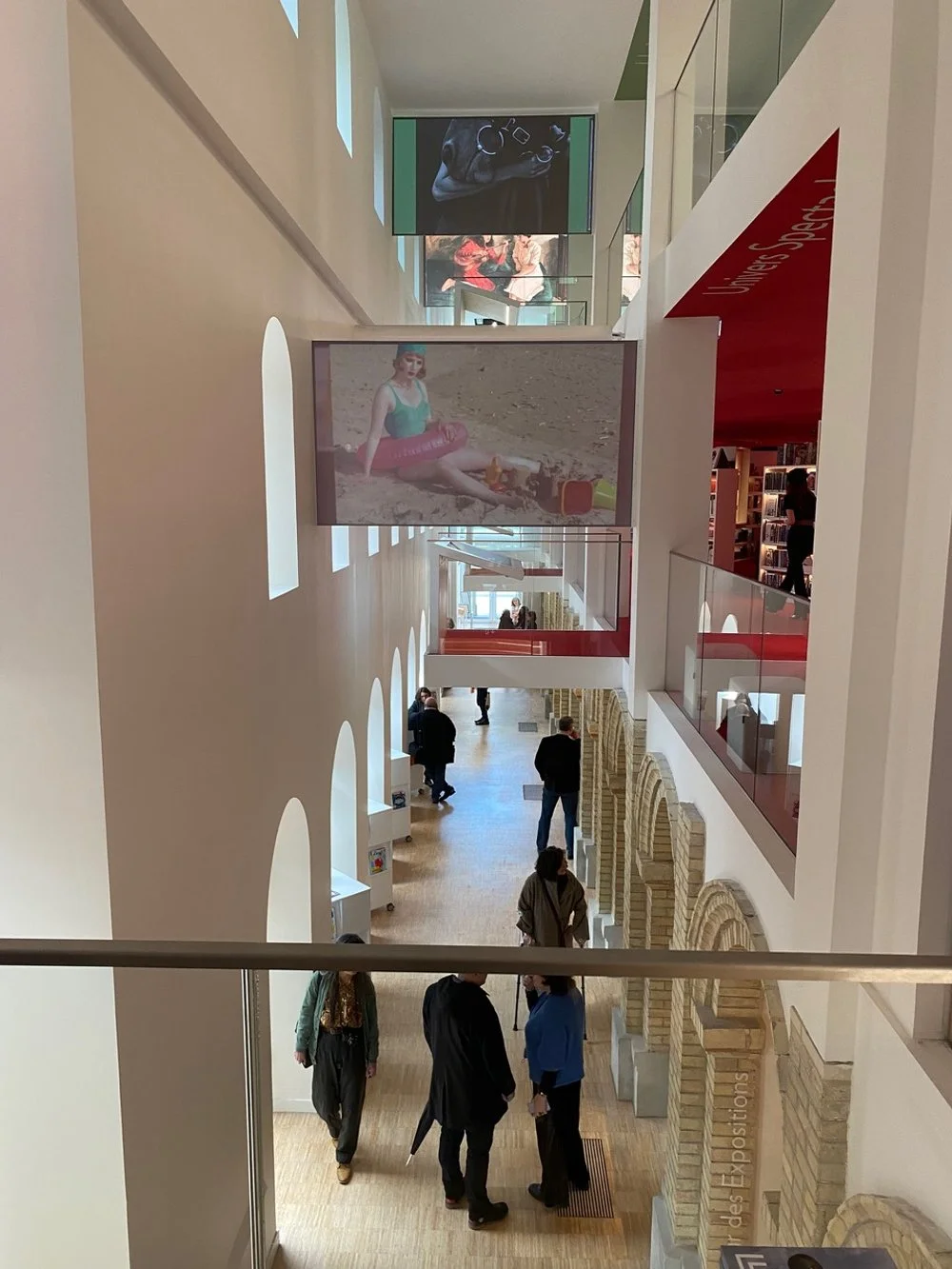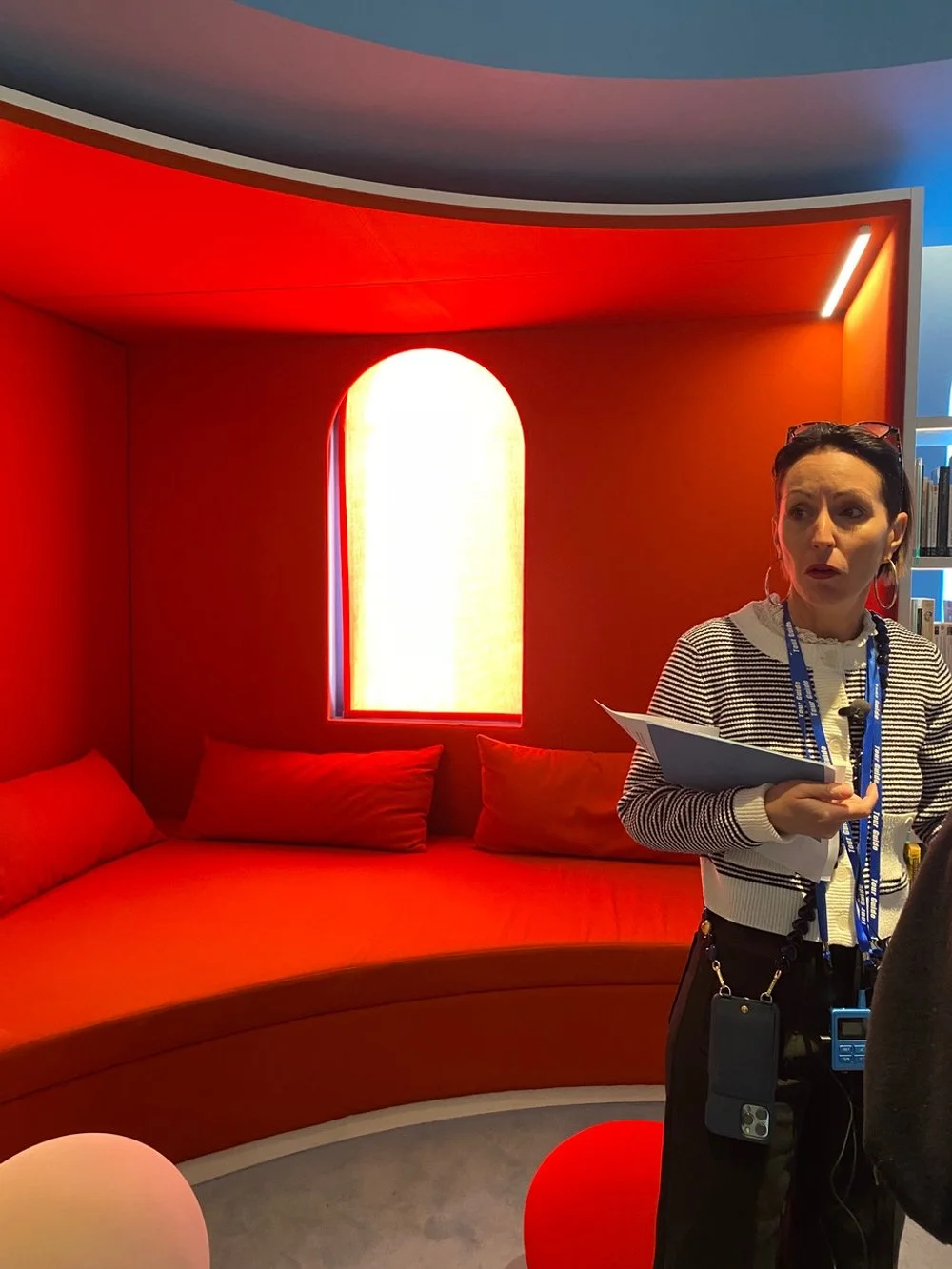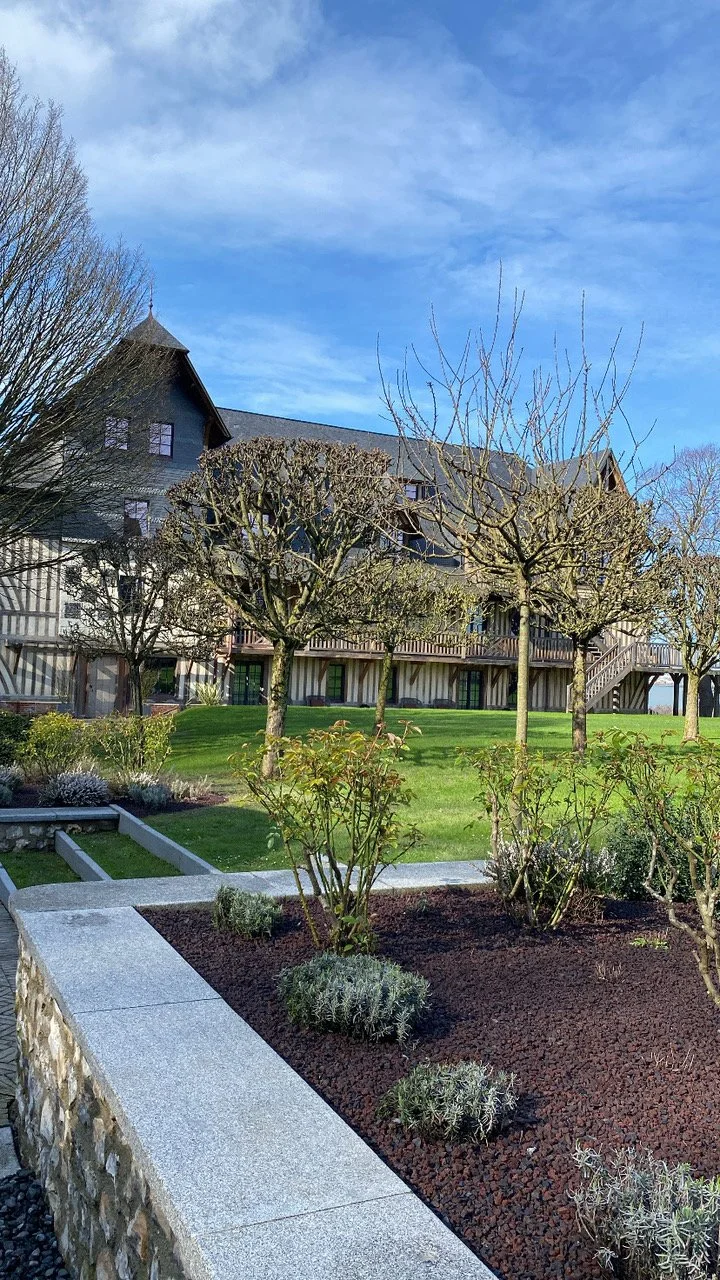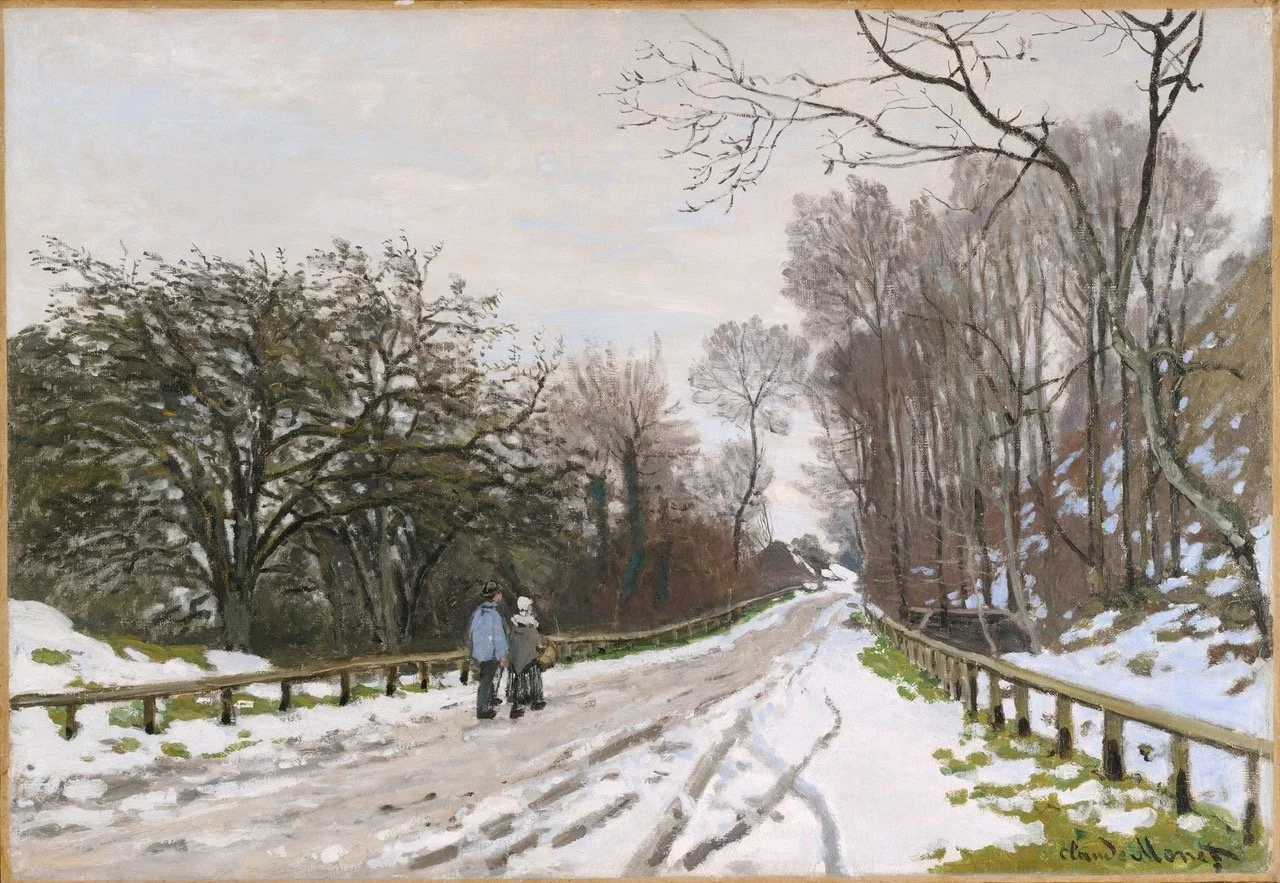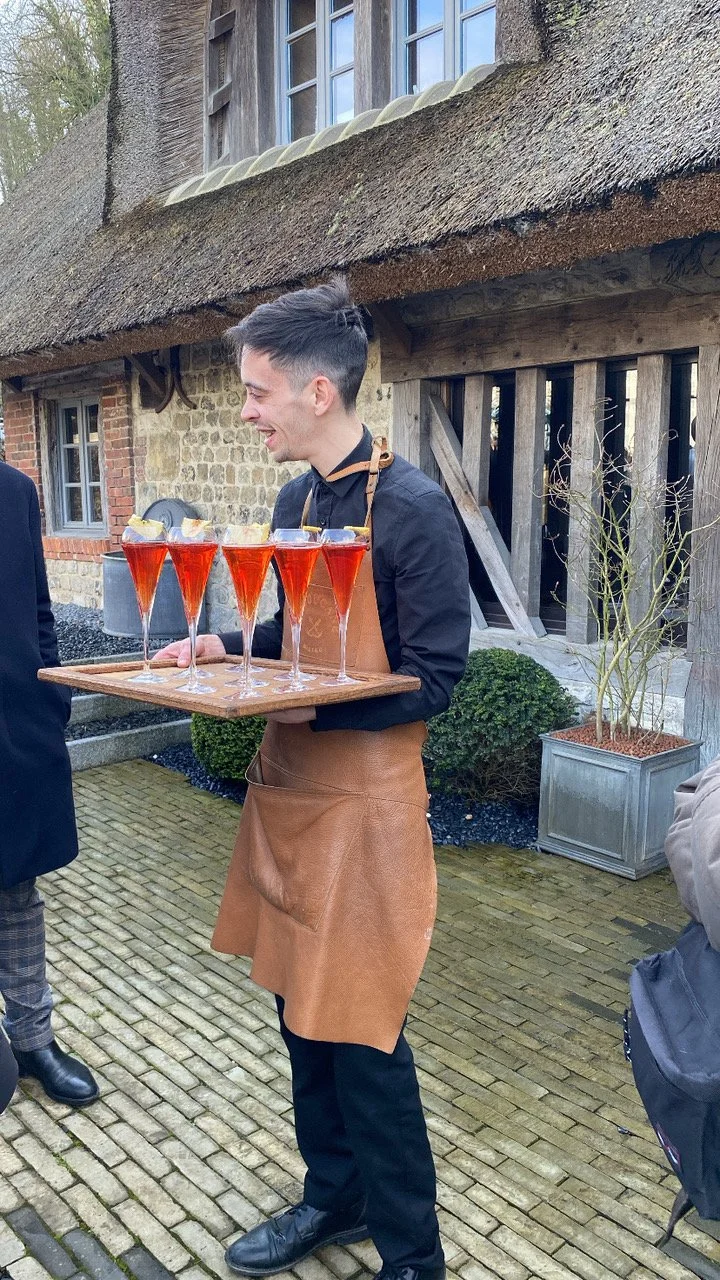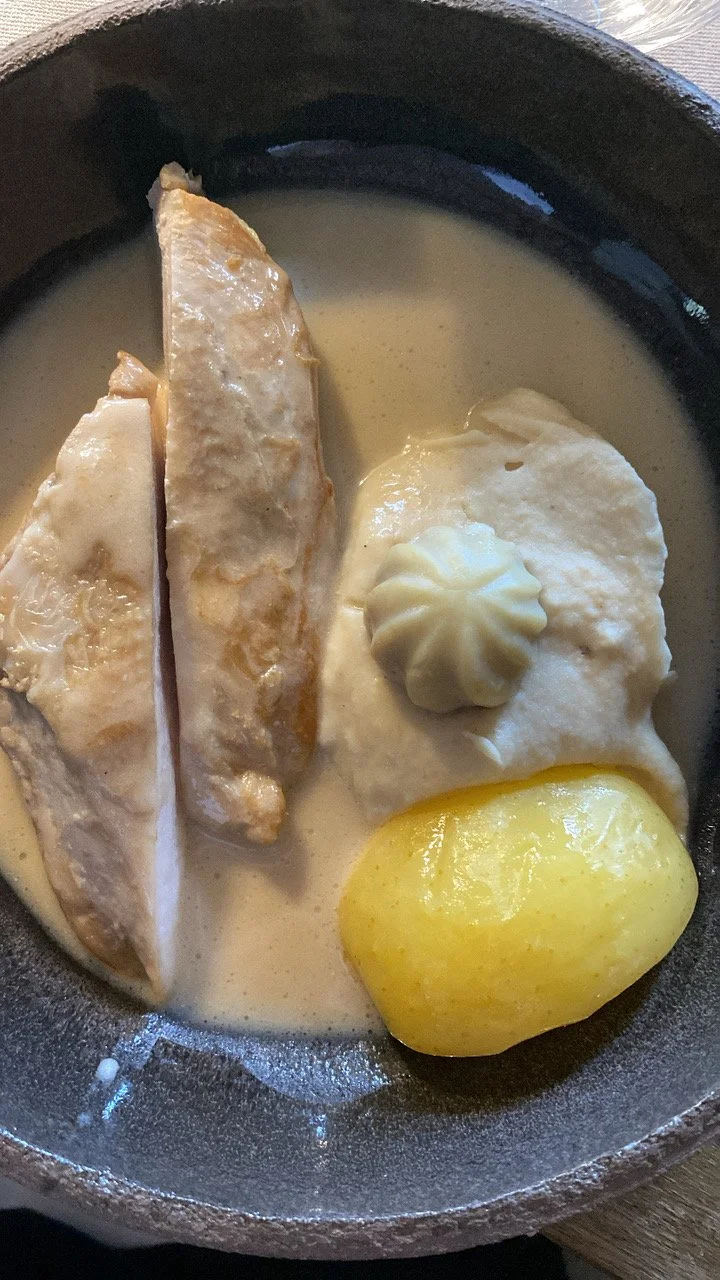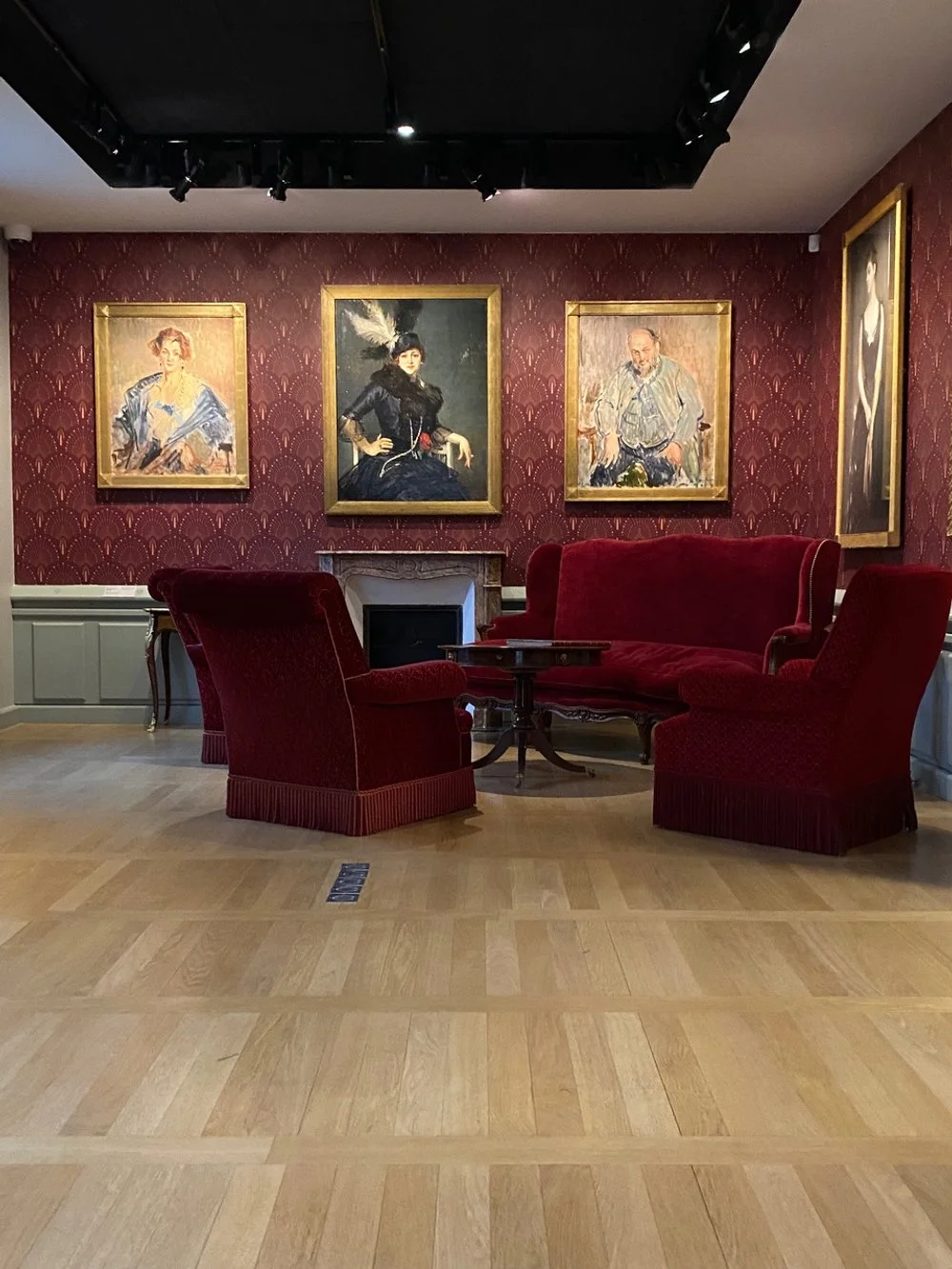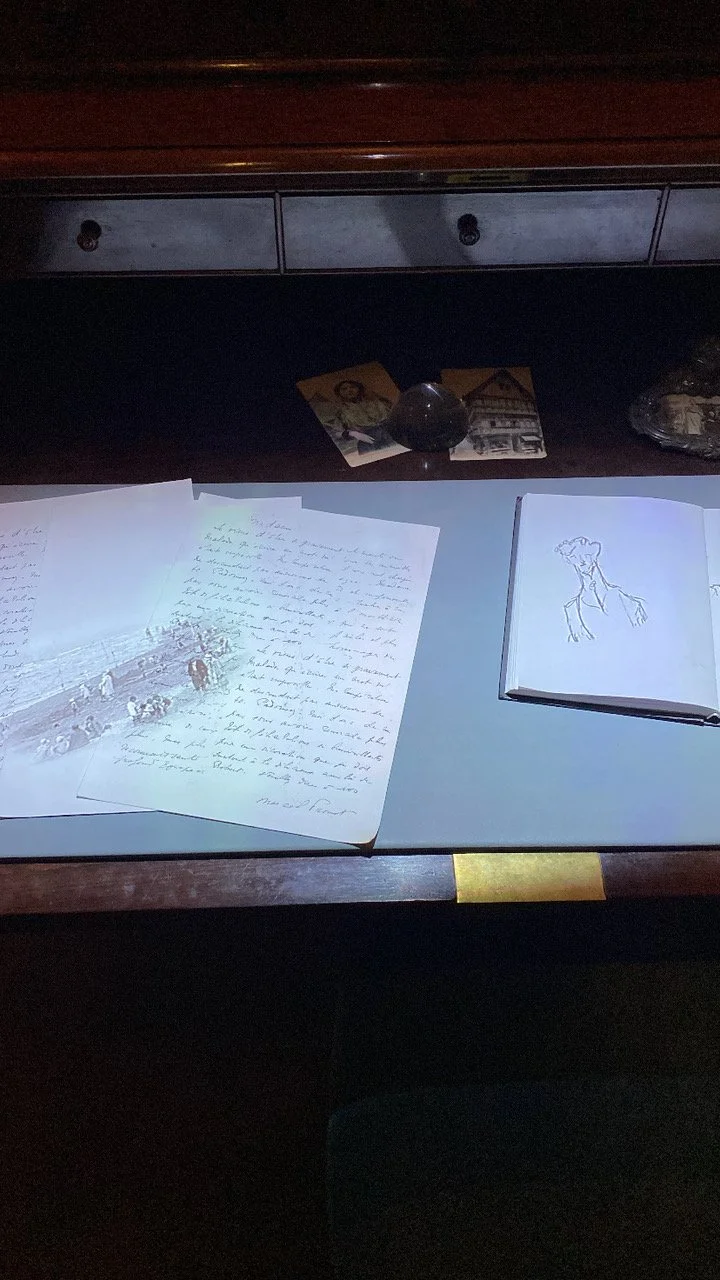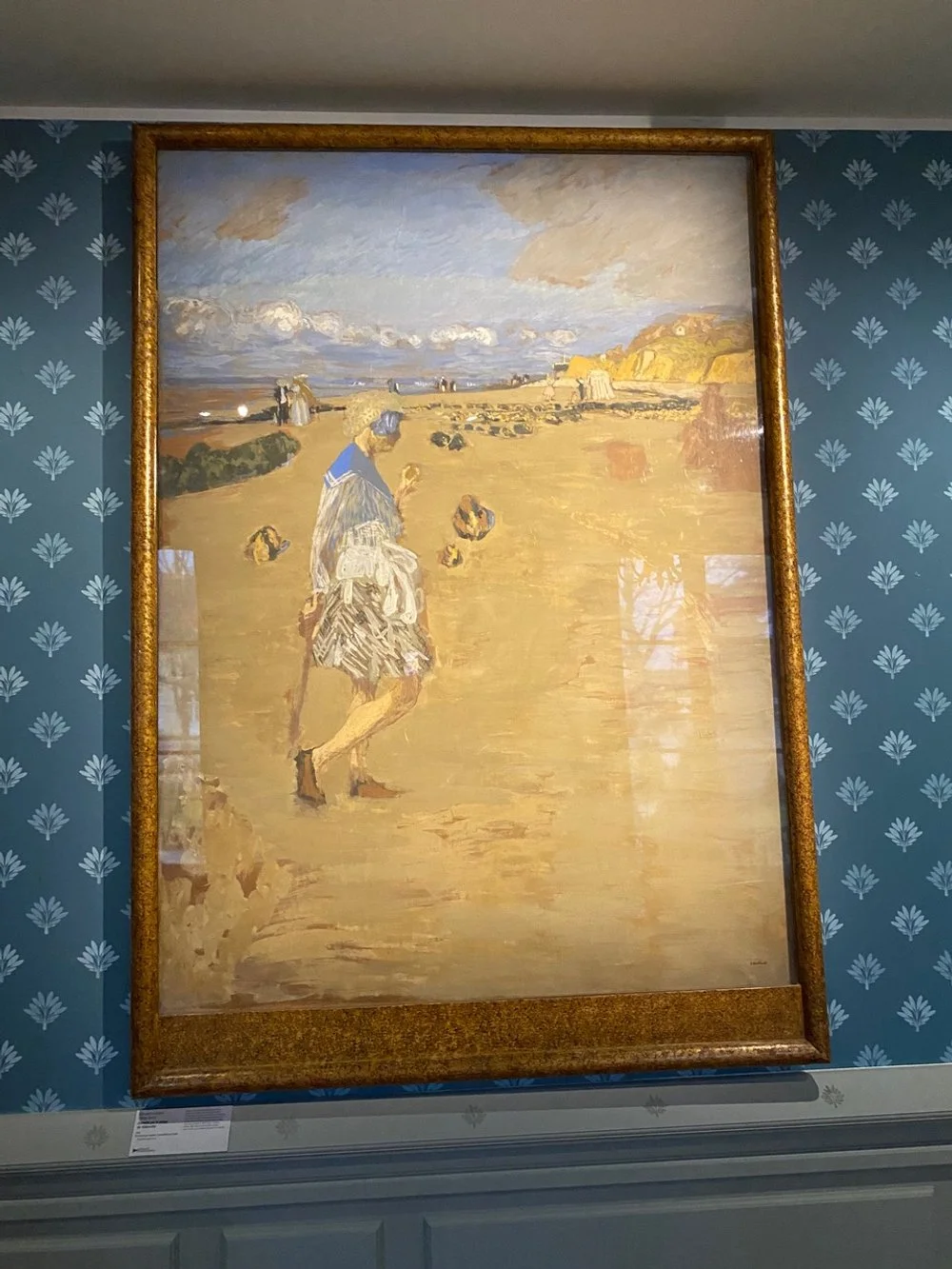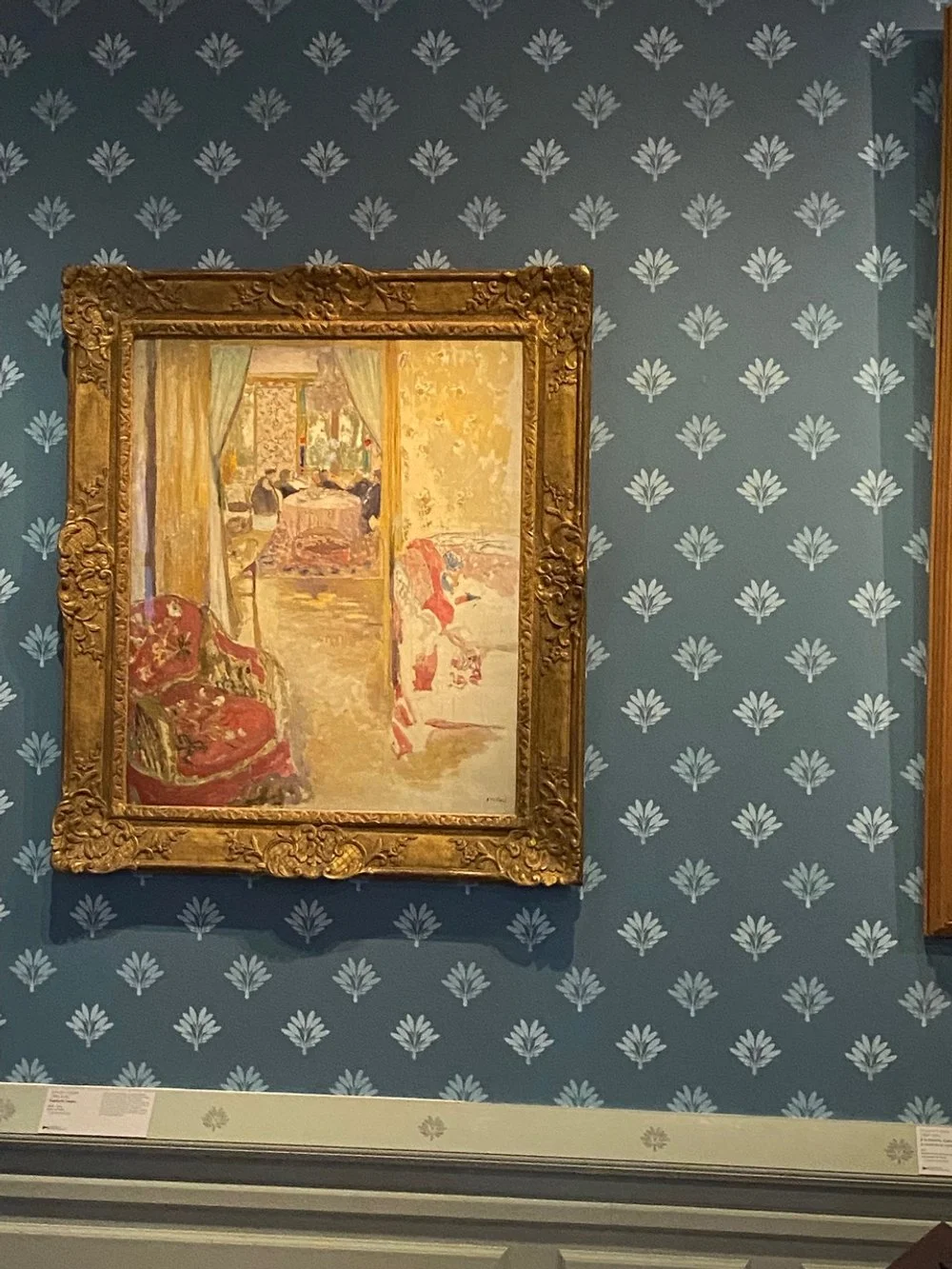Normandie Impressionniste or Beverly’s very (very) long press trip
Newsletter 03.31.2024
Bienvenue and welcome back to Musée Musings, your idiosyncratic guide to Paris and art. For those of you, who, like Proust’s mother, are fans of Esther, (about whom I have written here: Fêtes & Food) I hope you all enjoyed a hamantaschen this week. Do you have a favorite filling? I am partial to pavot (poppy seeds). For those of you tucking in or beginning to prepare your Easter feast, here’s a review of the chocolates I tasted last year :Eggs and Fish and Elephants, Oh My! I’m off pralines at the moment (the nut paste fillings in so many [too many] French bunnies and eggs) so I bought a boîte of chocolate sardines from Alain Ducasse and a Colombe de Pâques from Pierre Hermé, I’ll report back next week.
Thanks for the good luck wishes for the signing of the compromis. As it turned out, third time seems to have been the charm. I didn’t want to travel to the Dordogne and risk another canceled rendezvous, so I stayed in Paris and participated by Zoom. The buyers did show up at the Notaire. They didn’t bother to say hello to me and didn’t bother to apologize to anyone for missing two previously scheduled meetings. In the land of real estate, the buyer is king. We should all be treated like buyers.
In France, it is not only real estate professionals who go out of their way to protect buyers. It’s the government, too. My best guess is that it’s about power. As the French see it, sellers have more power than buyers (they own the property the buyers wish to purchase) so government rules and regulations privilege the buyers.
My buyers now have a 10 day ‘cooling off period’ during which they can change their minds. Without penalty. Not me. Sellers are not allowed second thoughts. If all goes according to plan, which none of it has so far, I might not be responsible for this property after 31 May. (Fig 1) A property with 8 bedrooms, a swimming pool and artist studio. And, oh yeh, 11 bathrooms. I once asked my plumber (now retired, living in Spain) who would want a house with 11 bathrooms. He said, someone with 12! This property is obviously not my pigeonnier. (Fig 2) I have loved my architect restored 17th century stone dovecote just down the road from Monbazillac and an hour’s drive from St. Emilion, for a very long time. It’s somebody’s else’s turn now.
Figure 1. Le Petit Rousset, Cogulot, France
Figure 2. Petit Bout, Mescoules, France
Today’s topic - a press trip I took to Normandy. For the Normandy Impressionist Festival. A celebration of the 150th anniversary of the first Impressionist exhibition held in Paris in 1874. Two years ago, the Musée Marmottan-Monet celebrated the first impressionist painting, Monet’s 1872 Impression Sunrise (Fig 3) with a fabulous exhibition on paintings of the sun from antiquity to contemporary. This year, through September, museums and cultural institutions throughout Normandie will be holding exhibitions related in some way to Impressionism. An exhibition that’s just opened at the Musée d’Orsay entitled, ‘Paris 1874’ (review upcoming) is about the same subject. That exhibition has an interactive component. But it seems to me that the most interactive thing to do would be to take a short train trip to Normandie!
Figure 3. Impression Sunrise, Claude Monet, 1872
Here’s how my participation in this junket came about. In mid-February, when I met with the director of the Villa du Temps Retrouvé and the communications director for the Ville of Cabourg, the latter asked me if I was free on the date of the first signing of the compromis de vente. Which I was not. Until the signing was canceled. And then I was. So I contacted him and he told me that I had two options. One was to go by coach to and from Cabourg for a six hours excursion.
The other option was to participate in a much more ambitious program. Which would include train rides and bus trips and stops in Deauville, Honfleur, Cabourg and Rouen. Which would last twice as long. Which I decided to do. (cue ominous music)
It began calmly enough because I started out early enough. I had two options for getting to Gare Saint-Lazare.(Fig 4) One was to take 2 metros and end up at the gare. The other was to take one metro and walk to the gare. With no sense of direction, I chose the former. In enough time so that when I stood on the platform at Republique waiting to transfer, I could change my mind when I saw smoke coming out of the arriving metro and the conductor unable to open the doors to let the passengers who wanted to disembark, get out. Plan B it was. Thank goodness the metro I needed also stopped at Republique. Leaving the smoking metro car behind, I found the right metro, going in the right direction. Not great to need a Plan B. So great when it works.
Figure 4. Gare Saint Lazare, Paris, Claude Monet
On the train to Lisieux (the second most visited pilgrimage site in France, after Lourdes) where a private bus waited to take us to Deauville, I met my fellow journalists, all ages, all nationalities. The bus ride was as long as the train ride. We arrived at our first destination, Deauville, at 11. We weren’t there to promenade along the boardwalk or to shop at one of the many designer boutiques. We weren’t even there to find the plaque commemorating Coco Chanel’s first boutique in Deauville. (Fig 5)
Figure 5. Plaque commemorating Coco Chanel’s first boutique in Deauville, 1913
We were here to see an exhibition at Les Franciscaines, a former orphanage run by nuns of the Franciscan order (Franciscaines) which the city of Deauville took over in 2012. The transformation of the space into a cultural center with exhibition space, library, movie theatre, performance spaces, lounges, etc. began in 2014. It was set to open in June 2020. Bad timing. The pandemic postponed the opening for a year.
In the meeting room in which we convened, we were welcomed by the mayor of Deauville, the director of The Franciscaines and the curator of the temporary exhibition we were there to see. Wait a minute I thought, what is going on. We just spent 3 hours getting here. But except for coffee (black) nothing was offered. I hadn’t eaten since 6:00 a.m., I was hungry. When I looked in my purse, I realized that my back-up graham crackers were in my bag on the bus…(ominous music repeat)
Before the talking started, I chatted with a young man who told me that Deauville is home to a photography festival, Planches Contact, as well as the American Film Festival. In 2022 and again in 2023, one of my favorite photographers, Omar Victor Diop (who I have written about here: Patterned Perfection) was a photographer in residence. He organized an exhibition and published a book. Photos of himself and a cast of characters in Deauville. They all wear traditional African garb and pose in and in front of traditional Normandy houses. (Fig 6)
Figure 6. Deauville, Omar Victor Diop
While Diop was at Deauville he collaborated on The Anonymous Project with Lee Shulman who has a collection of color slides taken by and of anonymous people. The pair did something radical with photographs from Shulman’s American slides from the 1950s and 1960s. Pictures of white middle-class families doing ordinary things - celebrating, relaxing, etc. Into these scenes, they dropped Diop. At first it’s a sight gag, the only black man at the party. But, the closer you look, the creepier it becomes. These are photographs of white people in post-war segregated America. What would they have made of Diop. What would they have done with/to an attractive, well dressed black man who dared to crash their party? (Figs 7, 8)
Figure 7. The Anonymous Project, Lee Shulman & Victor Diop, 2023
Figure 8. The Anonymous Project, Lee Shulman & Victor Diop, 2023
After the introductions, we went (hungry) on a guided tour given by the curator of the temporary exhibition. It was one of the best guided tours I have ever taken. The curator was so knowledgable and so enthusiastic about his subject. The exhibition was a contextualizing retrospective on the work of an artist I didn’t know, Zao Wou-ki, (1920 - 2013). A Chinese artist who emigrated to France and whose work combines Chinese and Western materials, Chinese and Western ways of creating, Chinese and Western ways of thinking. The exhibition includes paintings, watercolors, prints, tapestries, ceramics and steles. It is a celebration of an artist and his approach to representing “realities beyond those of the visible world.” This excellent exhibition is aptly called, ‘Les allées d’un autre monde’ (The paths of another world). (Figs 9-12)
Figure. 9. Zao Wou-ki, brush in hand, painting under foot, channeling Jackson Pollack
Figure 10. Zao Wou-ki, a little Mark Rothko vibe
Figure 11. Zao Wou-ki, ceramic bowl
Figure 12. Zao Wou-ki, painted Stele
After the exhibition, we had a 30 minute whirlwind tour of the gorgeous, enormous inside/outside space that is Les Franciscaines. Once again, we were led by an enthusiastic guide who told us with considerable pride, that people from the Pompidou had visited and said they hoped to make their museum into a cultural center like this one. We met volunteers whose love of the place was palpable. The morning we were there, the space was filled with people of all ages doing a range of independent and yet compatible things - reading, relaxing, practicing hip-hop. (Figs 13-16)
Figure 13. Les Franciscaines, exterior
Figure 14. Les Franciscaines, central space, inside outside with enormous chandelier
Figure 15. Anybody can program (curate) this slide exhibition of works of art owned by Les Franciscaines
Figure 16. Our guide explaining just how easy it is to relax at Les Franciscaines
At 1:15 p.m. it was time to leave. We were on our way to Honfleur, for lunch at the Ferme Saint-Siméon. (Fig 17) It was why I chose to come on this junket rather than the shorter one to Cabourg. I have known about Saint Siméon since forever, well, ever since my first art history course. I came on my own one time when I was staying in Deauville. But it’s a 5 star Relais et Chateau hotel now. It’s secluded and welcomes guests staying the night (a little more expensive than the Grand Hotel in Cabourg) and diners who have booked lunch or dinner. I didn’t fit into either category.
Figure 17. Ferme Saint-Siméon, Honfleur
The opportunity to come to this mythic place was one I didn’t want to miss. What’s so special about it? As early as the 1840s, the mistress of the place, a Mme Toutain, began welcoming young artists. In the 1860s, the farm became an informal artists colony when the artist Eugène Boudin, who was born in Honfleur, began bringing his friends like Courbet, Millet, Jongkind and Monet here. Monet wrote this, “Every day, I discover even more beautiful things, it’s driving me crazy! I want to do everything so much... My head is spinning! I am very happy with my stay here…”
In 1864, Monet was at the farm (room and board, 40 francs a month!) in the autumn and he was still there when it started snowing. He painted “Road toward the Farm Saint-Siméon, Honfleur.” From 1864 to 1867, Monet painted at least ten views of this road, in what many believe was his first continuing investigation of a single subject. (Fig 18) Here is how one observer described watching Monet paint, “We glimpsed a little heater, then an easel, then a gentleman swathed in three overcoats, with gloved hands, his face half-frozen. It was M. Monet, studying an aspect of the snow.”
Figure 18. Road toward Ferme Saint Siméon, 1867
La Ferme Saint Siméon is still a 17th-century farmhouse on the Côte Fleurie, now restored and renovated and upgraded. Visitors, well-heeled now, enjoy the same ever changing skies and light, the same views of the wild coastlines that inspired the Impressionists. And the same spaces - the thatched-roof building that Monet depicted on the left in his painting “La charette. Route sous la neige à Honfleur” is now one of the restaurants. (Fig 19) The spa is in the old apple press and ‘soins’ (beauty treatments), are made from organic Normandie apples. Guests in this small hotel can stay in Monet’s bedroom or Corot’s workshop.
Figure 19. La charette. Route sous la neige à Honfleur
The bus ride from Deauville to Honfleur did not take the 20 minutes stated on the itinerary. It took more than an hour along bumpy, windy roads. It was like driving from Napa to Sonoma in a bus with bad suspension. When we arrived nearly 45 minutes late, we were greeted by a phalanx of waiters holding flutes of something red, hard cider and cranberry juice, an homage to Monet’s rising sun. (Fig 20) The hotel manager greeted us warmly and explained how the Ferme would participate in the 150 Flavors of Impressionist Normandy. The luncheon they served us would be available for 50€. (Figs 21-23) considerably less than the 175€ regular fixe prix. And plaques with impressionist paintings on them would be placed in the gardens, at the spots where the artists had painted them, to encourage people to wander and linger.
Figure 20. Waiters welcoming us at La Ferme Saint Siméon with ‘Cider with rising sun’ Cocktail (see Fig 3)
Figure 21. Vallée d’Auge, local chicken prepared the traditional way, as Mme Toutain prepared it
Figure 22. Douillon, Traditional Pear Dessert
Figure 23. The Spa which has soins ‘treatments' using organic apples
The meal was simple but delicious. The waiters did their best to keep us from feeling rushed even though they were on a very tight schedule. I had a chance to chat with the director again, a charming fellow, passionate about his job. This is definitely one of those ‘worth the detour’ kind of places.
I did everything right, I didn’t take the proffered alcoholic beverage before our meal, I didn’t have wine with the meal, I didn’t even eat all of my meal. But I had waited too long to eat. On the ride from Honfleur to Cabourg, once again twice as long as the itinerary indicated, along the same and even worse bumpy, windy roads, my anti-nausea wristbands were of no use, nor was the French equivalent of non drowsy dramamine that I had taken at the beginning of the day. It was 3:00 p.m. and ahead of me was another 6 hours of bus and train travel (cue ominous music again)
It was really too bad because the Villa du Temps Retrouvé in Cabourg was fabulous. When I had seen it in mid-February it was between exhibitions. It was a bare skeleton of what it looked like two weeks later, bursting with gorgeousness. We were late, but we were graciously welcomed. This time with coffee and cold beverages and patisseries (too bad the Franciscaines hadn’t gotten the memo). I spoke briefly with the director. Among other things, we talked about the furniture. Which they borrow from the same national storeroom as every other French museum. But since they want to make their visitors feel at home, they specify furniture that people can sit on. It’s amazing how being encouraged to sit on the furniture changes your perceptions. The main exhibition was on Jules Verne, a contemporary of Proust’s. There was a mini-exhibition on Edouard Vuillard (about whom I have written here: Paintings have Patterns, People have Problems). I enjoyed it as much as I could, I have to return. (Figs 24 - 27)
Figure 24. Villa du Temps Retrouvé is like visiting a wealthy friend, take a seat and relax
Figure 25. A recreation of Proust’s desk at Villa du Temps Retrouvé
Figure 26. Edouard Vuillard painting at Villa du Temps Retrouvé
Figure 27. Edouard Vuillard painting at Villa du Temps Retrouvé
After a rushed visit, we left Cabourg an hour late, at 5:30, exactly when we were scheduled to arrive in Rouen. Once again I sat in front, next to the driver. In retrospect I don’t think that was the best seat, I think it was even bouncier than the ones behind. We arrived in Rouen, two hours later than scheduled and thankfully only one hour before our train departed for Paris. Please don’t ask me about the “Digital ParadICE IA” that was in the ice skating rink of our last stop. I did not see it, I was sick.
Not great for my seat mates (second class train travel is cramped), I continued to be sick for the full 90 minutes of our train trip back to Paris. But wait, it didn’t end there, I didn’t just walk out of the train and into the cool, rainy night. Two pompiers came with a wheel chair and helped me off the train. After they checked my vitals, they wheeled me out of the station and to the taxi rank. We were accompanied by two young guys who had been on the train, I think they were medical students.
I was initially going to call this post: Know your Limits or Beverly’s terrible horrible no good very bad day (from Judith Viorst’s 1972 children’s book of the same name) But as I wrote this, I realized that the Deauville and Ferme Saint Siméon part of this trip were fabulous. I must return to Cabourg, which is not an inconvenience. And now there’s a David Hockney exhibition in Rouen that I must see! Gros Bisous, Dr. B.
Copyright © 2024 Beverly Held, Ph.D. All rights reserved
Dear Reader, I hope you enjoyed reading this article. Please sign up below to receive more articles plus other original content from me, Dr. B. Merci!
And, if you enjoyed reading this review, please consider writing a comment. Thank you!




